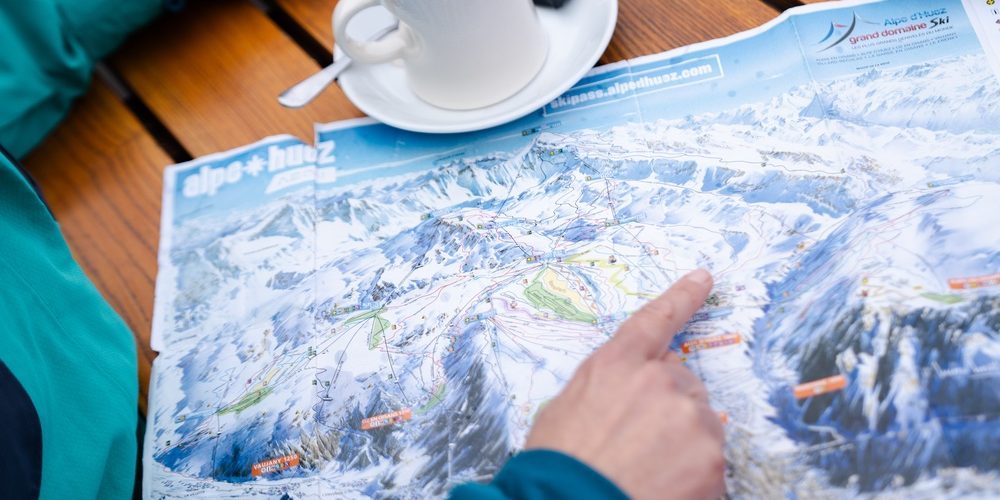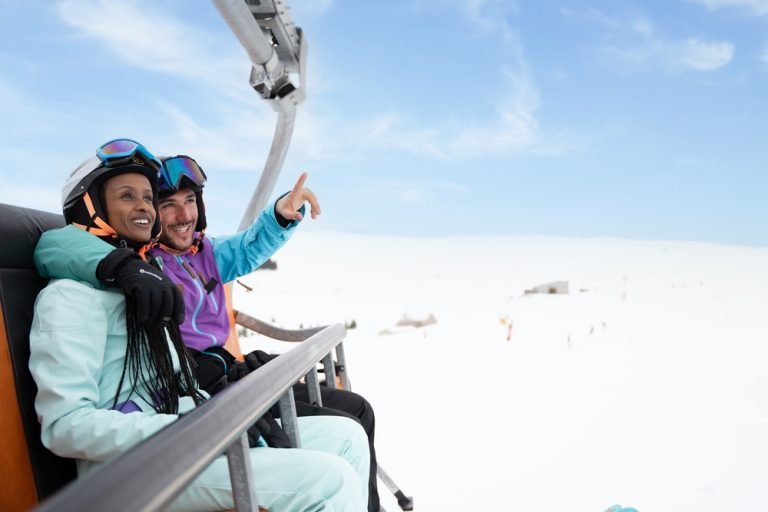Here is a useful little guide to some of the terminology you might hear people use – and what it actually means!
The Most Common Ski Terminology
- Après-ski: the time after skiing to relax and often have a drink and dance
- Binding: The connection between the ski boot and the ski.
- Cable car: Cabins, suspended on cables, transporting skiers to the top of the mountain.
- Drag lift: A moving rope that skiers grab to be towed up the mountain.
- Fall line: The most direct route down the mountain.
- Gondola: Small suspended cars that usually carry between four and ten skiers up the mountain.
- Off-piste: un-prepared and un-patrolled ski areas.
- Salopettes: Ski or snowboard trousers.
- Sidestep: To climb a slope using sideways steps.
- Ski brake: An attachment on your skis that stops them from going downhill when you are not attached.
- Snowplough: To put skis in a V-position to turn or slow down, mainly when you are learning to ski.
- Tail: The back of the ski.
- Tip: The front of the ski.
- Traverse: To ski across the mountain rather than down.
- White out: Poor visibility due to a combination of fog and snow.
How are ski pistes graded
In European ski resorts, pistes are classified by a colour-coded system. There are some differentiations in some countries but in most cases:
Green: gentle slopes that are suitable for beginners.
Blue: easy runs with slope gradients of no more than 25%.
Red: intermediate slopes, usually steeper or narrower than a blue one.
Black:more difficult slopes for very experienced skiers.
Orange: extremely difficult slopes that require expert skills. They are usually marked but not patrolled or groomed.
Yellow: ungroomed and un-patrolled slopes.
Ski Technique Terms
Ski technique refers to the skills and methods that you use to ski efficiently and effectively. Some of the most important ski technique terms are:
- Snowplough: The basic ski position that beginners use to control their speed and direction. A snowplough involves making a wide V shape with your skis, with the tips closer together and the tails apart. snowplough is also sometimes known as ‘the pizza’.
- Parallel: The ski position that more experienced skiers use to ski faster and smoother. It involves keeping your skis parallel to each other and to the direction of travel.
- Carving: The ski technique that involves making smooth and precise turns by using the shape and edge of your skis. Carving requires minimal skidding and sliding, which results in less friction and more speed.
- Pole Plant: This involves using your poles to initiate and support your turns. Pole plant involves tapping the snow with your pole tip at the beginning of each turn, which helps you to time your movements, align your body, and generate momentum.
- Freestyle: You won’t be doing this on your first ski trip as it involves performing tricks and jumps on the snow. Freestyle skiing can be done on different terrains, such as half-pipe, slopestyle, big air, and rail.
And for a final bit of help check out these ski holiday tips for a guaranteed great first ski trip.




